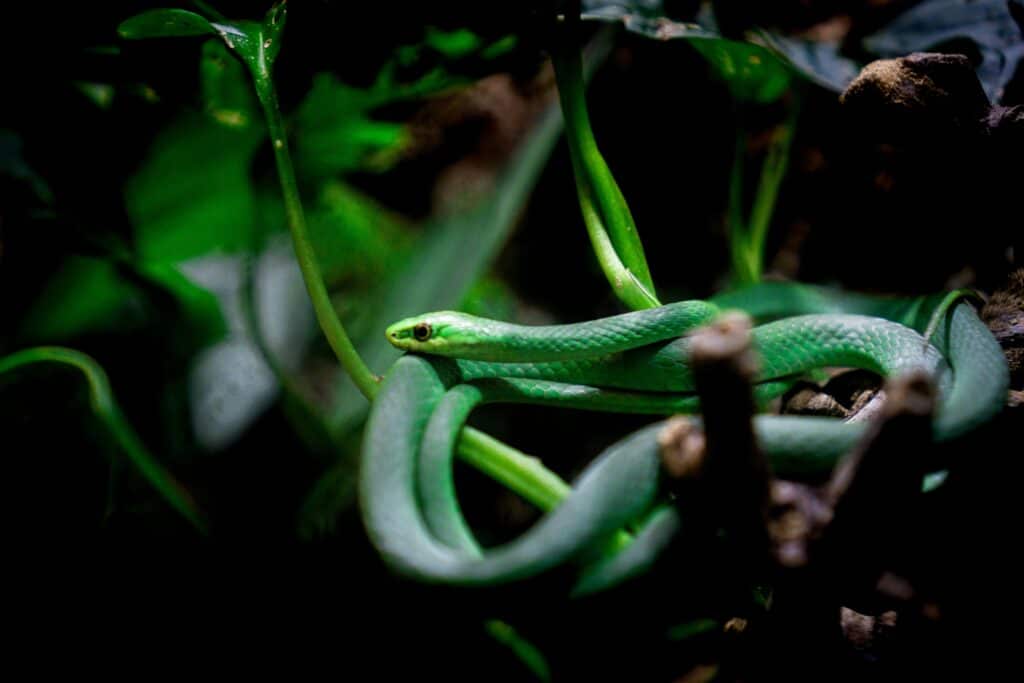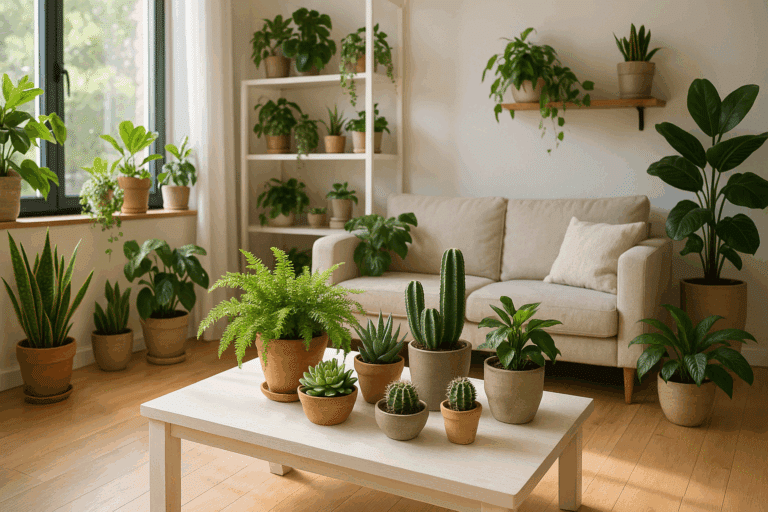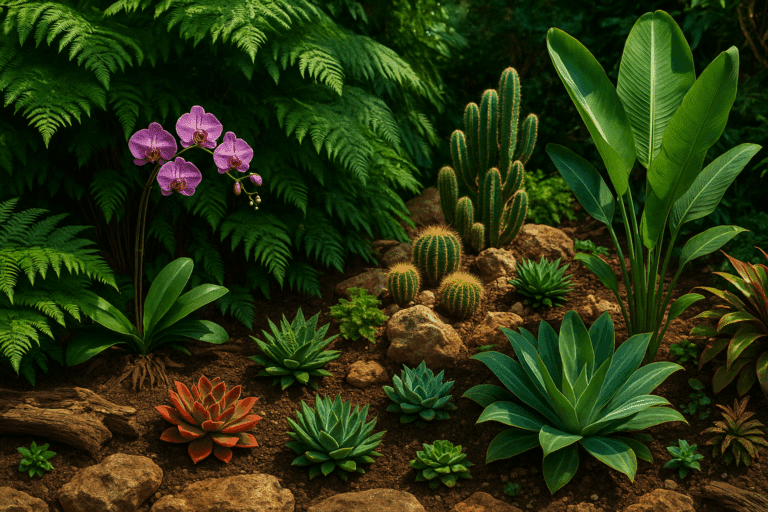But what if there was a way to fuse chic aesthetics and low maintenance into your personal green space? The snake plant, also known as Sansevieria, offers exactly that. Our upcoming content promises to guide you through this exciting journey of snake plant styling, which is an intriguing blend of simplicity and high style. 🌿

This unconventional indoor plant brings not only beauty but also a variety of health benefits to your living space. Its ability to purify the air by removing toxins makes it a perfect choice for urban dwellers who crave for a dose of nature indoors. Moreover, its hardiness ensures it can thrive even with minimum care, giving you a taste of gardening success, regardless of your experience level. 🌱
Join us as we delve deeper into this fascinating world of snake plant styling. We will explore diverse ways to incorporate this trendy plant into your decor, suitable watering routines, and optimal light conditions, among others. Stay tuned for a wealth of information that will not only inspire but also equip you with practical tips to transform your space with the snake plant. Ready to awaken your inner plant parent? Let’s dive in! 🌵
Understanding the Unique Attributes of the Snake Plant
The Snake Plant, also known as the Sansevieria or Mother-in-Law’s Tongue, is an exotic plant native to West Africa. It’s recognized for its unique structure, consisting of tall, upright leaves with green, gold, or silver variegation. It’s an excellent choice for beginners, as it thrives in a variety of environments and requires minimal care. However, its resilience doesn’t detract from its style. With its modern and architectural aesthetic, it can add a fresh dimension to your interior decor.
Low Maintenance Requirements of Snake Plants
One of the main reasons why snake plants have gained popularity among plant parents is their low maintenance requirements. They’re drought-tolerant, can thrive in low light conditions, and are resistant to most pests. The snake plant’s adaptability to diverse environments is due to its ability to store water in its leaves, similar to succulents. This makes it ideal for people who travel frequently or those who don’t have the time for consistent plant care.
Styling Your Space with Snake Plants
Despite their low maintenance requirements, snake plants can make a striking statement in any room. Their tall, vertical leaves can provide a sense of height and structure, perfect for breaking up open spaces or complementing other plants in a garden.
Using Snake Plants as Stand-Alone Features
Due to their unique structure, snake plants can serve as stand-alone features in a room. By placing a snake plant in a striking pot or basket, you can create a focal point in your space. Choose a pot that complements the plant’s color and height for maximum impact. You can also play around with placement – snake plants can thrive in corners or along walls, where other plants may not survive.
Mixing Snake Plants with Other Green Companions
Snake plants may shine on their own, but when combined with other indoor plants, their structured silhouette acts as a striking contrast. Pairing them with soft-leafed plants like ferns, peace lilies, or pothos creates a layered, dynamic arrangement that blends texture and height. This can be especially useful in corners, entryways, or living room zones that need visual balance or a fresh focal point.
For those with a taste for bolder interior styling, mix different Sansevieria cultivars within the same grouping. Varieties like ‘Black Gold,’ ‘Moonshine,’ or ‘Whale Fin’ provide distinct leaf shapes and color patterns, making the arrangement more visually stimulating while staying within the same easy-care family.
Using Snake Plants to Define Zones
In open-concept spaces, snake plants can be used as natural room dividers or subtle zoning tools. Their upright growth creates vertical barriers without blocking light or sightlines, making them ideal for separating living areas from workspaces or dining zones. Positioning a row of taller snake plants in matching pots along a low shelf or bench can segment space elegantly while still maintaining a cohesive flow.
This zoning technique is especially valuable in studio apartments, where every piece of furniture and decor must serve a purpose. A snake plant barrier adds structure and form while also purifying the air and adding a biophilic element to the environment.
Incorporating Snake Plants into Minimalist and Modern Interiors
The simplicity of the snake plant aligns perfectly with minimalist design principles. Their clean lines and bold shapes make them an excellent match for modern, Scandinavian, or industrial spaces. A single, well-chosen snake plant in a concrete or matte black pot can anchor a room with subtle sophistication.
In modern interiors where neutral tones dominate, a tall Sansevieria adds a splash of vibrant green that doesn’t overpower the aesthetic. Its verticality can mirror or contrast with other structural elements like shelving units, floor lamps, or wall art. Choosing a planter in a contrasting texture—such as woven rattan, polished ceramic, or metallic—further elevates the overall design.
Snake Plants for Hallways and Transitional Spaces
Oftentimes, hallways, stairwells, or transitional zones between rooms are overlooked in home styling. These spaces are usually narrow and don’t allow for much furniture, but they’re perfect for snake plants. Their small footprint and upright growth habit allow them to thrive in tighter areas without crowding the space.
Place a medium-height snake plant at the end of a hallway to draw the eye and create a point of interest. For stair landings or small nooks, a collection of varying snake plant sizes in matching pots can create a balanced, curated look. If you’re dealing with limited light, simply rotate your plants periodically to ensure they get enough exposure to stay healthy.
Statement Corners and Vertical Plant Staging
Another stylish way to use snake plants in interior decor is to build a vertical staging area. This can be done with a tall plant stand, ladder shelf, or even floating wall brackets. Begin with a large snake plant at the bottom or base, then add medium and small-sized varieties above. This pyramid of greenery becomes a living sculpture that instantly energizes a room.
Accent the display with warm lighting, natural wood textures, or minimalist planters to tie the design together. This setup is especially impactful in rooms with tall ceilings, allowing the vertical composition to fully express itself.
Final Word on Snake Plant Versatility
Whether you’re looking to liven up a dull corner, create visual structure in an open layout, or simply add an easy-care plant to your home, the snake plant delivers on every front. Its versatility in styling and space integration makes it one of the most flexible and rewarding plants for any decor style. From dramatic green walls to subtle minimalist accents, snake plants prove that low-maintenance doesn’t mean low impact.
Enhancing Home Office Environments with Snake Plants
As home offices become the new norm, creating a workspace that fosters both productivity and comfort has become essential. One of the simplest yet most effective ways to achieve this balance is by incorporating natural elements, and among the top contenders is the snake plant. Known for its sculptural shape and low maintenance, the snake plant not only complements interior aesthetics but also contributes significantly to indoor air quality and mental wellness.
The Psychological Perks of Biophilic Design
Biophilic design, or the integration of natural elements into built environments, has been proven to reduce stress, improve focus, and enhance creativity. Adding greenery like snake plants to your home office taps into this concept by visually and emotionally connecting you with nature, even when you’re indoors for extended periods.
The upright, blade-like structure of snake plants evokes a sense of order and calm, which can be especially helpful in work settings. These subtle visual cues help to create an organized and distraction-free atmosphere, encouraging a more focused mindset throughout the day.
Snake Plants for Small Spaces
Not every home office has the luxury of abundant floor space or natural light, but that’s where snake plants truly shine. Their ability to thrive in confined and dimly lit corners makes them particularly useful for compact workspaces, whether you’re working from a dedicated room or a nook carved out of your living area.
Miniature varieties such as Sansevieria ‘Hahnii’ or ‘Golden Flame’ can sit neatly on desktops without crowding your workspace. Their rosette growth pattern stays low, making them ideal for under-monitor placement or even nestled next to your laptop for a little burst of green in your peripheral view.
Customizing Décor with Snake Plant Varieties
There’s a surprising variety within the Sansevieria family, offering more options than the standard green blades. For a bold statement, the ‘Black Coral’ cultivar displays deep green leaves with silver stripes. The variegated ‘Laurentii’ variety, with golden leaf margins, provides a brighter accent to neutral spaces.
Interior designers often pair snake plants with textured ceramic pots, minimalist matte finishes, or modern concrete planters. The plant’s architectural shape naturally complements Scandinavian, industrial, and modern décor themes, making it an adaptable choice regardless of your personal style.
Desk Placement Tips for Productivity
Positioning your snake plant thoughtfully within your workspace enhances its impact. Placing a plant near your dominant hand or eye line can offer brief moments of visual rest, helping to counteract digital eye strain. It also adds softness to the angular lines of desks and screens, reducing visual fatigue.
Some people even report a subconscious comfort from the presence of plants, which can subtly reduce work-related anxiety. Place snake plants in clear view from your desk chair, preferably where ambient light touches them, such as near a windowsill or adjacent bookshelf.
Snake Plants and Air Quality: What Science Says
NASA’s Clean Air Study famously identified snake plants among the top performers in removing indoor pollutants like formaldehyde, xylene, and nitrogen oxides. While the degree to which houseplants can purify the air in real-world conditions is still debated, there’s consensus that snake plants contribute positively to indoor environments, especially when grouped with other plants.

They release oxygen at night—a trait unusual among houseplants—making them especially beneficial in shared spaces where fresh air may be limited. In small, closed-off home offices, their oxygen-boosting capability can help you feel less sluggish and more energized during long work sessions.
Elevating Your Wellness Routine
Snake plants don’t just purify your physical environment—they support emotional well-being too. Caring for a living plant, even one as low-maintenance as Sansevieria, offers daily mindfulness moments. Watering, rotating for light, or cleaning dust off leaves becomes a small act of self-care.
These micro-routines help break up the monotony of digital tasks and reintroduce tactile, present-focused activities into your workday. In particularly high-stress periods, this simple connection with nature can help ground you emotionally and foster a more balanced mental state.
Creative Styling Ideas for Snake Plants
Want to make your home office pop with style? Here are a few creative ways to style your snake plant:
Layering Heights: Use tall snake plants behind smaller tabletop plants to create depth and visual flow on shelves or in plant clusters.
Color Coordination: Match pot colors with accent elements in your office (e.g., lamp base, chair, or frames) to create cohesion.
Floating Shelves: Mount floating shelves at varying heights and mix small snake plants with books or art pieces.
Symmetry and Balance: Use snake plants on either side of a window or workstation for symmetrical visual balance.
Mixed Plant Corners: Pair snake plants with trailing varieties like pothos or upright climbers like philodendrons for contrast and richness.
Light Management for Optimal Growth
While snake plants can endure low light, they truly flourish in medium-bright, indirect sunlight. If your home office is on the dim side, consider rotating your plant every few weeks to another part of your home with more light, then returning it. This light vacation helps the plant remain vigorous without disrupting your décor.
In rooms with very little light, LED grow lights are an excellent solution. Compact, energy-efficient options can be mounted beneath shelves or even clamped onto desks, offering the right spectrum without dominating your space.
Seasonal Care for Year-Round Vitality
Snake plants are sensitive to seasonal changes, particularly in watering needs. During winter, when the plant enters dormancy, reduce watering frequency to once every 4–6 weeks, depending on your indoor humidity.
In spring and summer, you can resume biweekly watering and even fertilize once a month with a diluted succulent fertilizer. Watch for signs of overwatering such as mushy leaves, which indicate root rot—always err on the side of dry when unsure.
Stylish Storage Solutions for Plant Tools
Keep your plant care tools organized and stylish by using small baskets, decorative boxes, or drawers near your office space. A small spritz bottle for misting, a cloth for dusting leaves, and a moisture meter can be stored out of sight but within reach.
Creating a mini plant care station in a nearby cabinet or shelf will streamline your maintenance routine and help ensure your snake plant remains a healthy and attractive part of your office for years to come.
Conclusion
In conclusion, the Snake Plant, with its low maintenance and high style, is the perfect choice for those seeking to nurture their inner plant parent. The plant’s ability to thrive in various light conditions and its resilience against neglect makes it an ideal selection for beginners and busy individuals.
Its architectural aesthetics also make it a versatile element for interior styling, capable of adding an exotic, green touch to any space. Whether placed on a desk, a windowsill, or a vacant corner, the Snake Plant’s distinct and compelling appearance effortlessly enhances a room’s ambiance.
Additionally, the Snake Plant’s air-purifying properties contribute to a healthier living environment by eliminating toxins and improving air quality. Hence, it is more than just a decorative piece – it’s an addition to your home that benefits both your physical and mental health.
Therefore, embracing the Snake Plant is not only about cultivating a green thumb, but it’s also about fostering a greener lifestyle. Unleashing your inner plant parent with Snake Plant styling is indeed the perfect blend of low maintenance, high style, and wellness, making it a worthwhile venture for everyone.
Remember to embrace the journey, cherish every growth, and celebrate the simple joy of plant parenthood. 🌱💚



